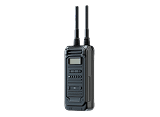
Not too long ago, securing any building meant the use of physical barriers, locks, keys, and security staff. More recently, computer based electronic access control systems using key cards or key fobs provided the ability for property managers to maintain a higher level of key-control and management-control of the access of people and vehicles to parking lots, buildings, rooms, and machinery.
These days, thanks to modern Access Control technologies, we can harness the power of the cloud as well as utilize mobile phone or facial recognition based credentials to provide even higher levels of security and convenience . Access control technologies are an essential piece of the puzzle, whether you’re hoping to secure a private residence, a small business such as a healthcare facility, commercial property, or even a government facility. Here’s what you need to know.
Benefits of Access Control Systems
The most obvious benefit of access control systems is added security, but there are actually several other benefits of this type of security system that also add value, such as:
• Convenience – Modern access control technologies are largely keyless, cardless, and fobless and instead work with cell phone apps or facial recognition AI video to make it easier for residents and visitors of buildings and facilities to enter and exit the premises as well for managers to issue or revoke access credentials.
• Enhanced control – Doors connected to modern access control systems can be configured to lock or unlock on a predetermined time schedule or can be set up to only allow temporary access for visitors or short term contractors.
• Accountability and activity logging – Modern access control technologies not only control who can enter a space, but they keep a record of every access event – so you can review who has been in your building at which times, and which areas they accessed while there.
• Ease of access – Unlike on-premise access control systems where security-related data is stored on-site, modern cloud-based systems, allow you to access your security information whenever you need to from wherever you are.
What to Consider When Evaluating Access Control Technologies
The first and most important thing you want to consider when choosing and evaluating access control technologies is the manufacturer, their reputation, their presence in your local area, and if they offer an on-premise or cloud based solution or both.
You want to find a reputable manufacturer with a physical presence in your area to get the after-sales service and technical support you need.
Once you’ve narrowed your manufacturer list down to a few good candidates, there are several other factors to consider:
1. Credentials & Readers
Modern access control technologies use a variety of user authentication methods, ranging from simple PIN-code based credentials to key cards, key fobs, key card or key fob + PIN-code, RFID vehicle tags, mobile phone apps, and even facial recognition biometrics.
Each type of authentication method requires slightly different hardware and software and offers varying degrees of security depending on the credential type.
Depending on the credential type you choose will determine the types are readers to deploy.
Readers can come in multiple form factors and read ranges and can work with a single credential type or multiple credential types.
Readers can be hardwired, built-into an electric lock-set, kiosk, turnstile or can be wireless and battery-operated.
Multi-technology readers can work multiple credentials types simultaneously, from unsecure 125kHz Proximity cards to higher security 13.56 MHz frequency smart cards or Bluetooth and NFC credentials.
The use of multi-technology readers allows customers to transition from older unsecure credential technologies to modern higher security credentials over time.
2. Cyber Security
On-premise systems do not require connection to the internet for management and control and therefore when configured as an off-line standalone system offer a high level of cyber-security. However, on-premise systems require manual software updates and preventative maintenance to ensure system uptime and cyber security standards are met.
Cloud-based systems provide the peace-of-mind of knowing your system is always up-to-date with the latest features and capabilities as well as cyber-security patches.
3. Total Cost of Ownership
Cloud-based solutions provide the convenience in accessibility to the system software from any internet connected device and are always up-to-date with the latest software features and capabilities, however typically cloud based systems come with higher annual recurring software subscription fees when compared to on-premise systems.
On-premise systems typically have a higher initial cost for hardware but a lower total annual recurring cost for system software updates.
4. Integration
Integration is the way of the future for every type of technology out there, and access control technologies are no different.
Access control system integration allows your access control equipment to be connected directly to other security systems including alarms, cameras, intercoms, fire alarms, building management systems, and more, which allows you to collect and manage all your security data from one comprehensive interface.
5. Scalability
Access control technologies can be an investment, and the last thing you want is to find that you’ve outgrown yours just a brief time after you installed it.
To avoid this scenario, look for access control systems that are scalable, meaning they can grow with your business’s security needs. You can usually add more equipment and monitor more areas, without upgrading the central control component of the system. Always ask your access control specialist what the expansion limitations of the system are before you make a choice, so you can plan ahead for future security needs.
Features of an Access Control System
1. Visitor Management
Sometimes you need to provide temporary access to guests, workmen, or someone else, and having an access control system that includes visitor management allows you to do just that.
Whether it’s issuing time-bound access codes to one person or having a special set of visitor remotes or tags, several options allow you to provide access where necessary while still maintaining security. For example, with this feature, you can allow delivery people into low-security areas or provide visiting consultants with access to your offices. This kind of visitor management option makes temporary access convenient for everyone.
2. Granular Access Levels
In most cases where an access control system is installed, there are several distinct types of users, each of which will require various levels of access to different parts of the building or premises.
A good access control system will incorporate granular security options that allow administrators to assign the correct level of access to each individual user, based on their role and responsibilities.
3. Door Status Monitoring
Usually, having a security system that includes access control technologies is enough to deter most would-be criminals, but sometimes, even with a high-tech security system, security breaches can still happen. Door status monitoring will provide the ability be alerted if a door is forced open or held open prolongs period of time as well as door forced open
4. Threat Levels
Even though most access control technologies are designed to keep people from passing through entrances, exits, and areas without authorization, there are situations where emergency evacuation in the shortest possible time is the top priority.
Threat Levels allow for multiple actions or functions to occur on the system through a single manual or triggered event such as the activation of an integrated “lock down” button. For example, when the lockdown button is pressed it would lock certain doors and trigger an alarm notification to the security operations center or to first responders.
5. Anti-Pass back
One of the oldest tricks in the book, for anyone trying to provide unauthorized access to someone else, is to pass their credentials, tags, or remotes to someone else before leaving an area. Anti-passback technology uses smart technology to identify this kind of situation and block or record the incident.
Often, these kinds of systems are based on smart timers, which limit the number of times and how frequently a particular key, remote, or tag can be used in a particular space without triggering an alert.
Unique Solutions for Every Security Need
Perhaps the best thing about modern access control technologies and integrated security systems is that they are completely customizable, and you can create a unique system that meets all of your needs, without investing in systems and equipment you don’t need.
When planning an access control system, it’s important to always have an installer visit the premises you want to protect, so that they can view the layout, inspect existing equipment, and ask questions about how you use the space in question. This will allow them to provide you with the best possible combination of technologies and options to get the results you need.
Our experts at Advanced Security Technologies are ready to talk to you today about all your security needs. Contact us today!














